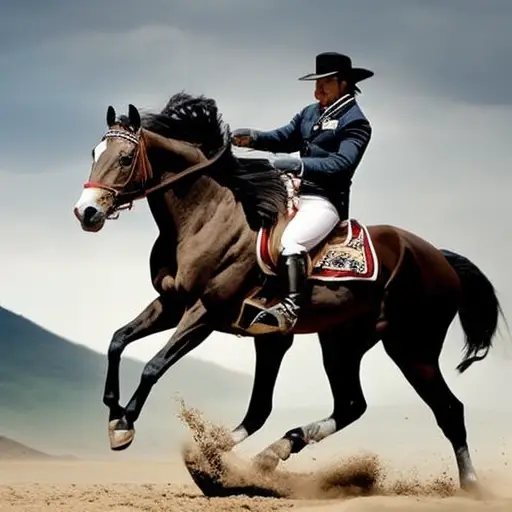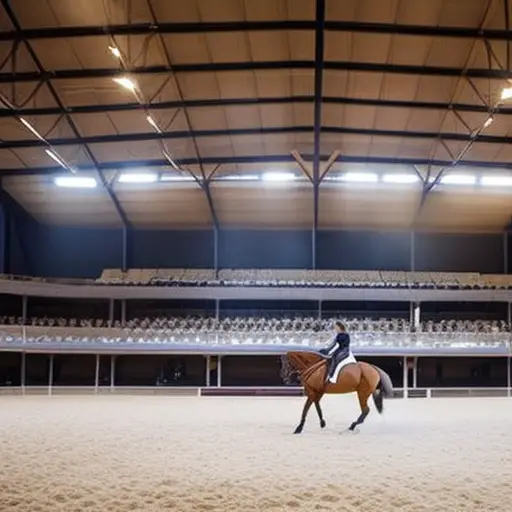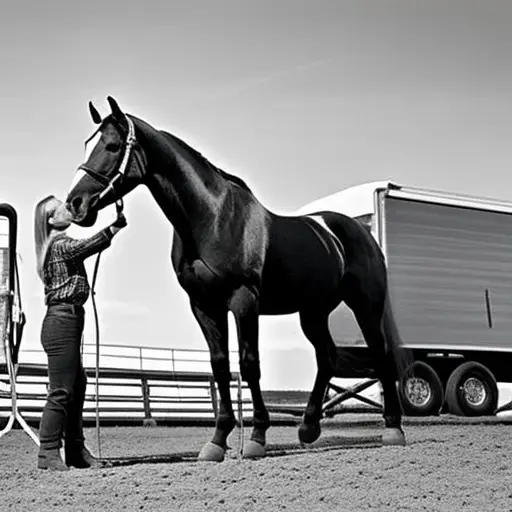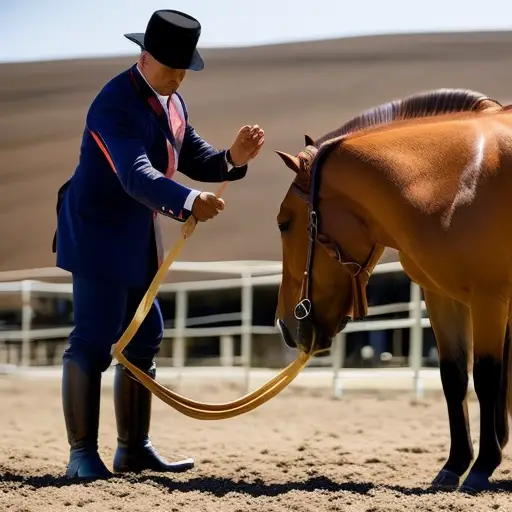Building Confidence in Horse and Rider: A Guide

Are you ready to build confidence in both you and your horse? Trust and communication are key in the equestrian world, and this guide is here to help you navigate the journey.
By understanding your horse’s body language, overcoming fear, and developing strong riding skills, you’ll be well on your way to success. With progressive desensitization and a variety of training techniques, you’ll build a foundation for both horse and rider.
Set realistic goals, celebrate small wins, and don’t forget to seek professional guidance and support.
Let’s get started!
The Importance of Trust and Communication
You need to establish a strong bond with your horse in order to build trust and effective communication. This is the foundation of a successful partnership between horse and rider. When you take the time to develop trust, your horse will feel safe and secure, allowing them to perform at their best.
Patience is key in this process. Horses are sensitive creatures and building trust takes time. It can be tempting to rush the process, but it’s important to remember that trust can’t be forced. Be patient and allow your horse to become comfortable with you and their surroundings.
Positive reinforcement techniques are essential in building trust and communication with your horse. Rewarding your horse for desired behaviors helps to reinforce those behaviors and encourages them to continue performing in that way. This can be done through treats, praise, or a gentle pat on the neck. By using positive reinforcement, you’re creating a positive and enjoyable experience for your horse, which will strengthen your bond and build trust.
Understanding Your Horse’s Body Language
Understanding your horse’s body language is essential for building a strong bond and trust between you and your equine partner. By paying attention to their nonverbal communication cues, such as ear position, tail movement, and facial expressions, you can better understand their emotions and needs.
This knowledge allows you to respond appropriately and build trust through clear and consistent cues, creating a positive and confident partnership.
Nonverbal Horse Communication
To effectively communicate with your horse, it’s important to observe and interpret the subtle cues in their body language. Nonverbal horse communication plays a crucial role in understanding equine behavior. Your horse may use various gestures, movements, and expressions to convey their emotions and intentions. By paying close attention to these nonverbal cues, you can develop a deeper connection and build trust with your horse.
Look for signs of relaxation, such as a soft eye, relaxed ears, and a lowered head. Watch for tension or anxiety, which may be indicated by pinned ears, a raised tail, or a tense jaw. By understanding your horse’s body language, you can respond appropriately, creating a positive and harmonious partnership.
Keep practicing and observing, and your communication skills will continue to improve.
Recognizing Stress Cues
Take note of the three main stress cues that horses often display in their body language. Recognizing stress cues in horses is crucial for managing rider anxiety and building a strong bond between horse and rider.
The first cue to look out for is tension in the body. When a horse is stressed, they may hold their body rigidly, with their muscles tense and their head held high.
The second cue is excessive movement or restlessness. If your horse is constantly shifting their weight, pawing at the ground, or pacing back and forth, it’s a sign that they’re feeling stressed.
Lastly, watch for changes in their facial expression. A horse’s eyes may become wide and alert, their nostrils may flare, and their ears may be pinned back.
Building Trust Through Cues
When riding your horse, it’s important to pay attention to your horse’s body language in order to build trust between you and your horse. Building trust is a crucial component of your partnership, and understanding your horse’s cues is key to establishing that trust. By learning to interpret your horse’s body language, you can communicate effectively and build a stronger bond.
To help you understand your horse’s cues, here is a table outlining some common body language signals and their meanings:
| Body Language Signal | Meaning |
|---|---|
| Ears forward | Alert and attentive |
| Ears pinned back | Aggression or discomfort |
| Tail swishing | Irritation or annoyance |
| Relaxed posture | Calm and content |
As you spend more time with your horse, you will become more attuned to their subtle cues. Remember to be patient and observant, and always respond to your horse’s signals with kindness and understanding. Building trust takes time, but with consistent effort, you and your horse will develop a strong and harmonious partnership.
Overcoming Fear and Building Resilience
Don’t let fear control your progress when building resilience as a horse rider. Overcoming anxiety is a crucial step in developing mental toughness and becoming a confident rider. It’s normal to feel nervous when facing new challenges or uncertain situations, but remember that you have the ability to overcome your fears.
Start by acknowledging your fears and understanding their root causes. Is it a fear of falling off or getting injured? Or perhaps it’s a fear of losing control? Once you identify the source of your anxiety, you can start working on strategies to overcome it.
One effective technique is visualization. Close your eyes and imagine yourself successfully navigating through challenging situations. See yourself riding confidently and in control. This mental rehearsal can help build resilience and reduce anxiety.
Another helpful approach is gradual exposure. Start by practicing in a controlled environment, gradually increasing the difficulty level as you gain confidence. Working with a trusted instructor or coach can provide guidance and support throughout this process.
Remember, building resilience takes time and effort. Be patient with yourself and celebrate the small victories along the way. With determination and a positive mindset, you can overcome your fears and become a resilient horse rider.
Keep pushing yourself, and soon you’ll be amazed at what you’re capable of achieving.
Developing a Solid Foundation in Basic Riding Skills
To become a skilled rider, start by building a solid foundation in basic riding skills. Developing balance and coordination, as well as improving your rider posture and position, are essential aspects of this foundation. Here are a few key points to keep in mind as you work on developing these skills:
-
Balance and Coordination
-
Practice exercises that focus on strengthening your core muscles, such as sitting trot without stirrups or standing in your stirrups at the walk.
-
Engage in off-horse activities that improve your balance and coordination, such as yoga or Pilates.
-
Improving Rider Posture and Position
-
Maintain a straight line from your ear, shoulder, hip, and heel while riding to achieve a proper alignment.
-
Keep your shoulders back and relaxed, allowing your arms to hang naturally by your sides.
-
Ensure that your legs are relaxed and draped around the horse’s barrel, with your heels down and toes pointed slightly forward.
Remember, building a solid foundation takes time and practice. Be patient with yourself and celebrate each small improvement along the way. By focusing on developing your balance and coordination, as well as improving your rider posture and position, you’ll lay the groundwork for becoming a confident and skilled rider.
Keep up the good work!
Building Confidence Through Progressive Desensitization
You should gradually expose yourself and your horse to new and potentially challenging stimuli to build confidence through progressive desensitization. Desensitization techniques involve introducing your horse to various objects, sounds, and situations in a controlled and gradual manner. This helps them develop confidence and trust, allowing them to remain calm and focused in potentially stressful situations.
Start with small, non-threatening objects such as plastic bags or tarps. Allow your horse to sniff and investigate these objects at their own pace. As they become comfortable, gradually increase the intensity by moving the objects closer to them or introducing new objects with different textures and sounds.
Remember to always observe your horse’s body language, as it will provide valuable insights into their comfort level. If they show signs of stress or fear, take a step back and give them time to relax before continuing. Patience is key during this process.
Gradual exposure is crucial for building confidence. Begin by introducing your horse to new environments, such as different arenas or trails. As they become more comfortable, gradually expose them to more challenging situations, such as riding with other horses or encountering unexpected noises.
Exploring Different Training Techniques for Horse and Rider
Now that you’ve built a solid foundation of confidence through progressive desensitization, it’s time to explore different training techniques for both you and your horse.
Effective training methods are key to furthering your skills and strengthening the bond between you and your equine partner. By focusing on building trust and communication, you’ll be able to develop a harmonious partnership that will take your riding to new heights.
Remember to stay open-minded and be willing to try different approaches to find what works best for you and your horse.
Effective Training Methods
With a variety of training techniques available, it’s important to explore different methods for building confidence in both horse and rider. By incorporating positive reinforcement and mental conditioning into your training routine, you can create a positive and supportive environment for both you and your horse.
Here are some effective training methods to consider:
-
Positive Reinforcement:
-
Use treats or praise to reward desired behaviors.
-
Focus on rewarding small steps towards progress to build confidence.
-
Mental Conditioning:
-
Incorporate desensitization exercises to help your horse overcome fears and build trust.
-
Implement consistent routines and exercises to establish a sense of security and familiarity.
Building Trust and Communication
Establishing trust and effective communication is essential for building a strong partnership between horse and rider.
When it comes to understanding boundaries and building a partnership, there are various training techniques you can explore. One technique is to focus on clear and consistent cues. By using your body language, voice, and reins effectively, you can communicate your expectations to your horse.
Another technique is to practice groundwork exercises, such as leading and lunging, which can help develop trust and respect between you and your horse.
Additionally, incorporating positive reinforcement, such as praise and rewards, can reinforce desired behaviors and strengthen the bond between you and your horse.
Setting Realistic Goals and Celebrating Small Wins
You can start by setting a few achievable goals and celebrating each small victory along the way. Goal setting is an important aspect of building confidence in both horse and rider. By breaking down your ultimate goal into smaller, more manageable steps, you can make progress and build confidence with each achievement.
Here are some tips to help you set realistic goals and celebrate your small wins:
-
Be specific: Clearly define what you want to achieve. Whether it’s improving your horse’s responsiveness to your cues or mastering a specific riding technique, setting specific goals will help you stay focused and motivated.
-
Use positive reinforcement: Celebrate every small win along the way. Positive reinforcement is a powerful tool for building confidence. Reward yourself and your horse for reaching milestones and making progress. This could be as simple as giving yourself a pat on the back or giving your horse a treat.
-
Track your progress: Keep a journal or create a checklist to track your progress. Seeing how far you’ve come can be incredibly motivating and help you stay on track towards your ultimate goal.
-
Seek support: Surround yourself with a supportive community. Share your goals with fellow riders or find a mentor who can offer guidance and encouragement. Having a support system will make your journey towards confidence and success even more rewarding.
Seeking Professional Guidance and Support
To gain valuable insight and assistance, consider seeking professional guidance and support. Professional coaching can be a game-changer for both horse and rider, helping you reach new levels of confidence and skill. Whether you’re a beginner or an experienced equestrian, working with a knowledgeable coach can provide you with the tools and techniques to overcome challenges and achieve your goals.
One of the key benefits of professional coaching is the mental preparation it offers. Riding can be physically demanding, but it’s also a mental game. A coach can help you develop a positive mindset, teaching you how to manage nerves, stay focused, and overcome self-doubt. By addressing the mental aspect of riding, you’ll be better equipped to handle the pressures of competition and perform at your best.
To give you a clearer idea of how professional coaching can support your journey, here’s a table showcasing some of the ways a coach can help:
| Professional Coaching Benefits | Description |
|---|---|
| Skill development | Learn new techniques and refine your riding skills |
| Goal setting and planning | Set realistic goals and create a roadmap to achieve them |
| Feedback and analysis | Receive constructive feedback to improve your performance |
| Confidence building | Build self-confidence and overcome fear and anxiety |
| Motivation and support | Stay motivated and receive ongoing support throughout your journey |
Frequently Asked Questions
How Often Should I Ride My Horse to Build Confidence?
You should ride your horse regularly to build confidence. Consistent practice and time spent together will help you develop trust and communication, key elements in building confidence between horse and rider.
Can I Build Confidence in My Horse Without Developing Trust and Communication?
You can build confidence in your horse through building trust and communication. They go hand in hand and are essential in horse training. Remember, the stronger the bond, the more confident your horse will become.
What Should I Do if My Horse Exhibits Signs of Fear or Anxiety During Training?
If your horse shows fear or anxiety during training, stay calm and patient. Use strategies like desensitization and positive reinforcement to help them overcome their fears. Remember, building confidence takes time and consistency.
Are There Specific Exercises or Drills That Can Help Me Improve My Riding Skills?
To improve your riding skills and build confidence in both you and your horse, try incorporating specific exercises and drills into your training sessions. These activities can help you become a more skilled and confident rider.
How Long Does It Typically Take to See Progress in Building Confidence Through Progressive Desensitization?
It typically takes time to see progress in building confidence through progressive desensitization. Everyone is different, but with consistent practice and the right desensitization techniques, you’ll start noticing positive changes in your confidence levels. Keep at it!
Conclusion
Congratulations! You’ve reached the end of this guide on building confidence in both horse and rider. It’s been quite the journey, hasn’t it? Remember, confidence isn’t built in a day, but with trust, communication, and resilience, you and your horse can conquer any challenge.
So saddle up, embrace the irony that building confidence takes time, and enjoy the rewarding process of becoming a confident equestrian duo. Keep striving, keep growing, and keep believing in yourself and your four-legged partner.
Happy riding!

Join Davina Gardea on a journey into the world of horsemanship. With a deep passion for horses and years of experience, Davina shares invaluable insights and techniques to enhance your connection with these magnificent creatures. Explore the art of riding, training, and nurturing a profound bond with horses at diedgone.com.






